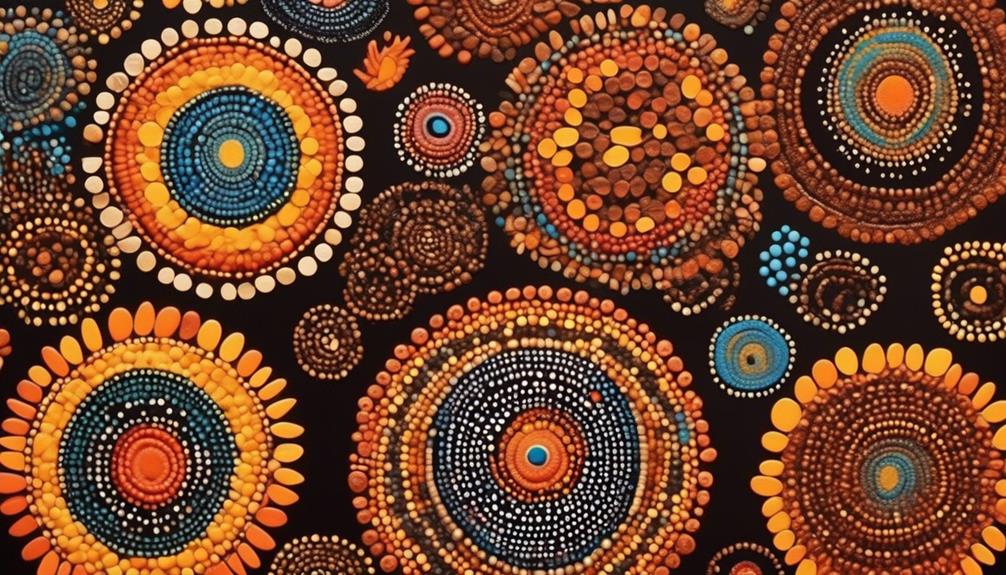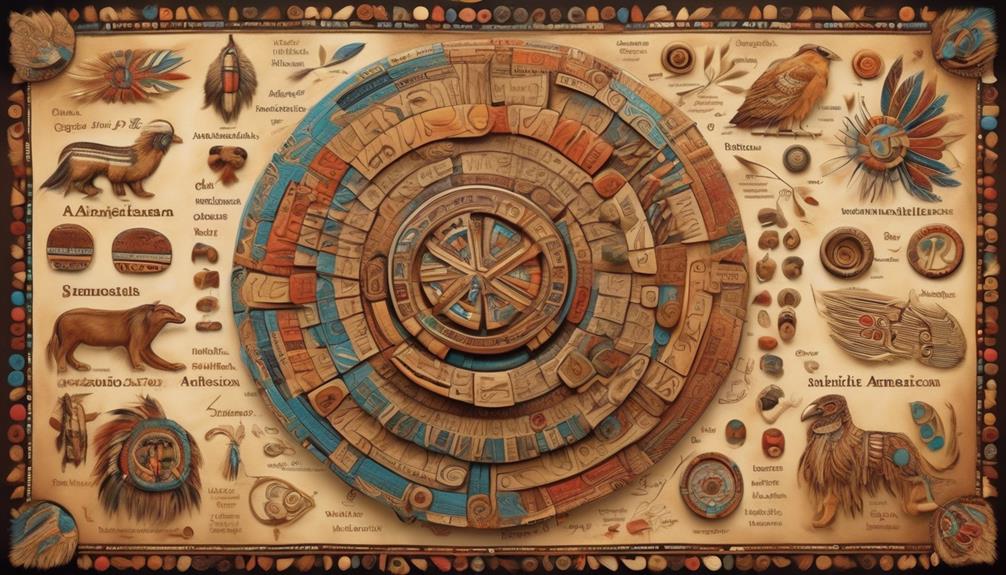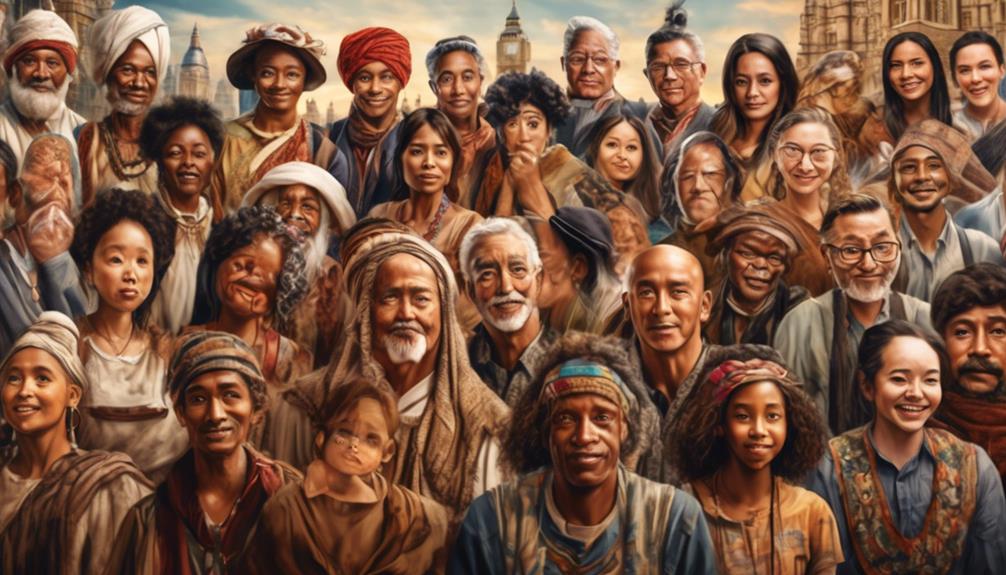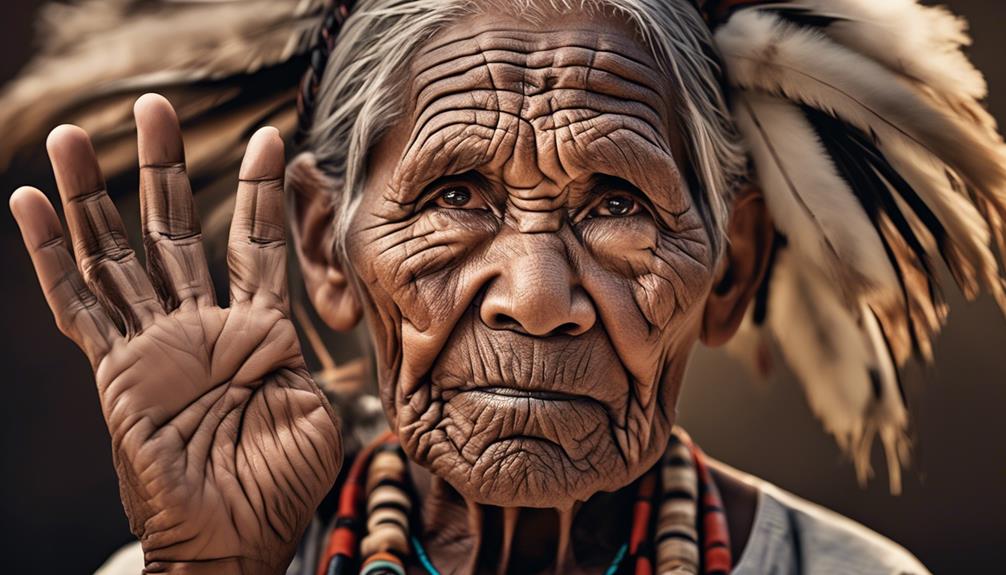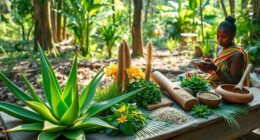You probably know the saying, ‘A picture is worth a thousand words.’ This is particularly accurate when teaching Aboriginal art to elementary school students.
There's a rich cultural heritage waiting to be uncovered, and introducing young minds to the beauty and symbolism of Aboriginal art can be a truly rewarding experience.
So, how can you help your students appreciate and understand this ancient art form in a way that's engaging and educational? Let's explore some creative ideas that will not only spark their imagination but also deepen their appreciation for Indigenous culture.
Key Takeaways
- Aboriginal symbols hold deep cultural significance and represent stories, connection to land, and ancestral spirits.
- Dot painting techniques involve color blending, cultural symbolism, precision, and patience.
- Dreamtime story illustrations should be researched and created with guidance from Indigenous elders or community members, using symbols and imagery that align with the cultural context.
- Indigenous animal art should reflect the symbolism associated with different animals and convey important stories and cultural teachings.
Understanding Aboriginal Symbols
To understand Aboriginal symbols, it's essential to appreciate the depth of meaning and cultural significance they hold within Indigenous communities. These symbols aren't just random designs; they carry deep, symbolic meanings that are intertwined with the rich history, traditions, and spirituality of the Aboriginal people.
Each symbol represents a story, a connection to the land, the environment, and the ancestral spirits. Their cultural significance is profound, as they're a way for Indigenous Australians to communicate, pass down knowledge, and express their identity and belonging.
It's important to recognize that these symbols aren't just art but are a living part of the Aboriginal culture, carrying values and beliefs that have been passed down through generations. Understanding the symbolic meanings and cultural significance of these symbols allows for a deeper appreciation of Aboriginal art and fosters respect for the traditions and heritage of Indigenous communities.
Exploring Dot Painting Techniques

As you explore dot painting techniques, you'll uncover a method deeply rooted in the symbolic storytelling and cultural traditions of Aboriginal art. This unique form of artistic expression holds great significance for Indigenous Australians and provides a rich opportunity for you to delve into their heritage. Here are some key aspects to consider as you embark on your journey of mastering dot painting techniques:
- Color Blending: Experiment with blending different shades to create depth and vibrancy in your dot paintings. Explore the use of earthy tones and bright hues to evoke emotions and narratives within your artwork.
- Cultural Significance: Understand the stories and cultural significance behind the symbols and patterns used in traditional dot paintings. Embrace the opportunity to learn about the deep connection between art and Indigenous Australian history.
- Precision and Patience: Embrace the meticulous nature of dot painting, as it requires patience and attention to detail. Each carefully placed dot contributes to the overall narrative of the artwork.
- Symbolism: Delve into the meanings behind various symbols used in dot painting, as they often represent elements of nature, ancestral stories, and spiritual beliefs.
- Personal Expression: While honoring the traditional techniques, allow your own creativity to shine through in your dot paintings. Find ways to incorporate your unique perspective while respecting the cultural roots of this art form.
Creating Dreamtime Story Illustrations
Incorporate the ancient tales of Dreamtime into vibrant illustrations that captivate and honor the rich cultural heritage of Indigenous Australian storytelling. Dreamtime stories hold immense cultural significance as they're the traditional beliefs of Indigenous Australians, passed down through generations via storytelling. When creating Dreamtime story illustrations, it's crucial to understand the visual representation of these stories and their importance in preserving traditional beliefs.
To begin, research the Dreamtime stories associated with a specific Aboriginal group or region. These stories often explain the origins of the land, animals, and natural phenomena, and understanding their cultural significance is key to respectfully representing them. Engage with Indigenous elders or community members if possible, to gain insight and permission to depict these stories.
Once you have a deep understanding of the Dreamtime story, focus on visually representing it in a way that respects the sacred nature of the tale. Use symbols, colors, and imagery that align with the cultural context of the story. Ensure that your illustrations honor the storytelling tradition and convey the depth of the narrative's meaning.
Creating Dreamtime story illustrations offers an opportunity to not only showcase artistic skills but also to pay homage to the traditional beliefs and cultural significance of Indigenous Australian storytelling.
Designing Indigenous Animal Art
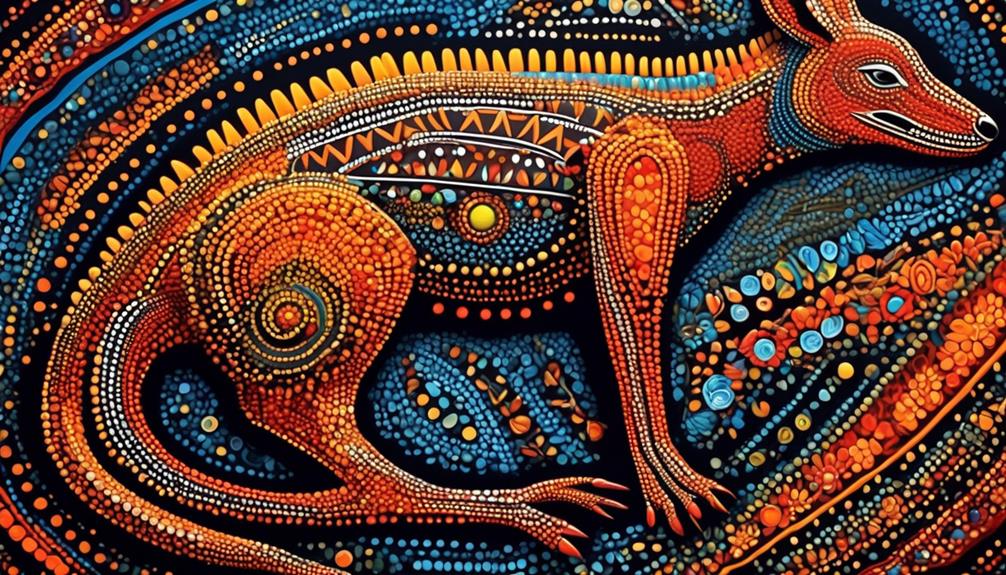
Explore the vibrant world of Indigenous animal art, drawing inspiration from the rich cultural heritage and diverse fauna of Indigenous Australian communities. Indigenous animal art is deeply intertwined with cultural symbolism and storytelling, making it a fascinating subject for artistic exploration.
When designing Indigenous animal art, consider the following:
- Animal Symbolism: Research the traditional meanings and symbolism associated with different animals in Indigenous Australian culture. Each animal often holds significant spiritual and cultural symbolism, so understanding these meanings will enrich your artwork.
- Traditional Techniques: Experiment with traditional Indigenous art techniques such as dot painting, cross-hatching, and natural pigment usage. These techniques have been passed down through generations and offer a unique way to represent animals in your artwork.
- Connection to Land: Reflect on the connection between Indigenous communities and the land, and how animals are depicted as an integral part of this relationship. Consider how you can convey this profound connection through your art.
- Respect and Authenticity: Approach the portrayal of Indigenous animals with respect and authenticity. Research the specific animals found in the region you're focusing on and ensure your artwork accurately represents them.
- Storytelling through Art: Explore how Indigenous animal art is often used to convey important stories and cultural teachings. Consider the narrative or message you want to convey through your artwork.
Expressing Emotions Through Colorful Art
Using a vibrant palette and bold strokes, you can effectively convey a wide range of emotions through colorful art. Color symbolism plays a significant role in Aboriginal art, where different colors hold specific meanings and are used to express emotions and tell stories. By understanding the meanings behind colors, you can create artwork that conveys a powerful emotional message. Here's a table to illustrate the symbolism of colors in Aboriginal art:
| Color | Symbolism |
|---|---|
| Red | Energy, power |
| Yellow | Happiness |
| Blue | Spiritual |
| Black | Endurance |
| White | Peace |
Artistic expression through color allows you to communicate feelings of joy, sadness, strength, and peace. For example, using vibrant reds and yellows can evoke a sense of happiness and energy, while incorporating deep blues and blacks can convey a feeling of spiritual connection and endurance. Through the use of color, you can create visually striking artwork that resonates with a wide range of emotions, making it a powerful tool for self-expression.
Frequently Asked Questions
What Are Some Common Misconceptions About Aboriginal Art That Children Should Be Aware Of?
Common misconceptions about Aboriginal art include the belief that all Indigenous art is the same and that anyone can recreate it. It's important for children to understand the diversity and cultural significance of Aboriginal art.
Emphasize the need for cultural sensitivity and respect for traditional techniques. By teaching children about the complexities and richness of Aboriginal art, they can develop a deeper understanding and appreciation for this important cultural heritage.
How Can Teachers Incorporate Discussions About the Cultural Significance of Aboriginal Art Into Their Lessons?
To truly understand the cultural significance of Aboriginal art, start by incorporating storytelling into your lessons.
Encourage students to recognize artistic expression and cultural symbolism.
Take the time to understand the cultural context and provide opportunities for students to interact with artists and communities.
Are There Any Specific Protocols or Guidelines That Should Be Followed When Teaching Aboriginal Art in a Primary School Setting?
When teaching aboriginal art in a primary school setting, it's essential to follow specific protocols and guidelines. Respecting traditions and cultural significance is crucial.
Ensure that you engage with contemporary aboriginal art in a respectful manner. Teaching protocols emphasize the importance of understanding and honoring the cultural heritage of aboriginal art.
What Are Some Ways to Ensure That Students Understand the Importance of Respecting and Honoring the Traditions of Aboriginal Art?
To ensure students understand the importance of respecting and honoring the traditions of Aboriginal art, it's crucial to incorporate discussions about cultural significance. This helps them grasp the depth of the heritage they're learning about.
Understanding traditions is key in fostering respect. By engaging in respectful dialogue and showcasing the beauty of Aboriginal art, students can develop a profound appreciation for the traditions and history behind it.
How Can Primary School Students Engage With Contemporary Aboriginal Artists and Art Communities to Gain a Deeper Understanding of the Art Form?
To gain a deeper understanding of the art form, primary school students can engage in engaging workshops and collaborate with contemporary Aboriginal artists and art communities.
This provides an immersive experience, fostering a profound connection to the art and its cultural significance.
Through these interactions, students not only learn about the techniques and styles but also gain valuable insights into the stories, traditions, and contemporary relevance of Aboriginal art.
Conclusion
So go ahead and incorporate these Aboriginal art ideas into your primary school curriculum.
Did you know that a study showed that students who learned about Aboriginal art and culture had increased empathy and understanding of different perspectives?
By teaching these art techniques, you're not only fostering creativity, but also promoting cultural appreciation and empathy in your students.
Keep exploring and celebrating the rich heritage of Aboriginal art in your classroom!
Mary is a passionate writer who brings creativity and a fresh perspective to our team. Her words have the power to captivate and inspire, making her an essential contributor to our content. Mary’s commitment to storytelling and dedication to promoting Indigenous culture ensures that her work touches the hearts of our readers. We’re fortunate to have her as part of our team.
